Harnessing the power of wind as a natural resource for generating electricity has become a crucial component of the global push toward renewable energy sources. As one of the most fast-growing and vital sectors of renewable energy, wind power converts the kinetic energy from wind into electrical power. This transformation is done using wind turbines, and one of the key elements in this critical power-generating machinery is the wind turbine slip ring.
The role of wind turbine slip rings is elemental yet often overlooked. It aids the mechanism that captures and converts wind energy into electricity, providing a necessary solution for the common issue of power and data transmission between stationary and rotating parts. Servicing wind turbines that operate under extreme weather conditions is not an easy task. As such, the right functioning of components such as slip rings directly impacts the overall efficiency and reliability of a wind turbine.
Delving deeper into the subject of wind turbine slip rings, this comprehensive guide will shed light on every aspect. From understanding what a wind turbine slip ring is, its structure, and reasons for its popularity in wind turbines to common issues and troubleshooting methods, this article covers everything that helps in understanding this critical component of wind energy generation. We will also explore how to maintain these slip rings, their replacement solutions, installation procedures, and customized solutions.
What is a Wind Turbine Slip Ring?
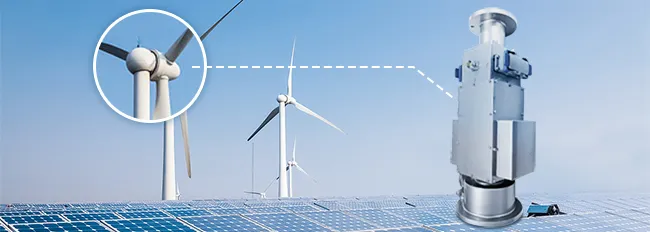
A wind turbine slip ring, also known as a rotary electrical interface, rotating electrical connector, swivel, or collector, is a device that enables the transmission of power and electrical signals from a stationary source to a rotating part in the wind turbine. The basic role of a slip ring is to provide continuous electrical connection between the stationary and rotating systems, ensuring data transmission during the rotation.
In a wind turbine, the rotor blades rotate to capture wind energy, and the wind turbine slip ring in the hub transfers this energy from the rotating machinery to the stationary parts of the turbine. This energy is then converted into electrical energy, which is eventually transferred to the power grid.
The nature of wind turbines requires them to rotate freely and continually adjust their direction based on the wind’s speed and position, which itself is continuously changing. The need for continuous rotation means that regular cables would twist and ultimately, snap under this constant strain. As a solution, wind turbine slip rings are used to avoid such issues, offering an unhindered, smooth flow of information and power from the stationary to the rotating part, and vice versa.
To simplify, if the wind turbine’s rotational parts were the body and the stationary parts were the brain, the wind turbine slip ring would be the nervous system, connecting both and enabling smooth communication between them. Understanding the slip ring’s pivotal role provides an in-depth view of the intricate design and functionality of wind turbines and the significance of this technology in harnessing renewable energy.
Why are Slip Rings Popular in Wind Turbines?

Slip rings hold a significant place in the mechanic structure of wind turbines primarily because they provide a reliable pathway for the transmission of power and signals from stationary cables within the nacelle to the rotating elements located in the hub. Built robustly, a typical slip ring assembly often comprises solid metal and graphite or precious-metal wire brushes that contact the outside diameter of a rotating metal ring.
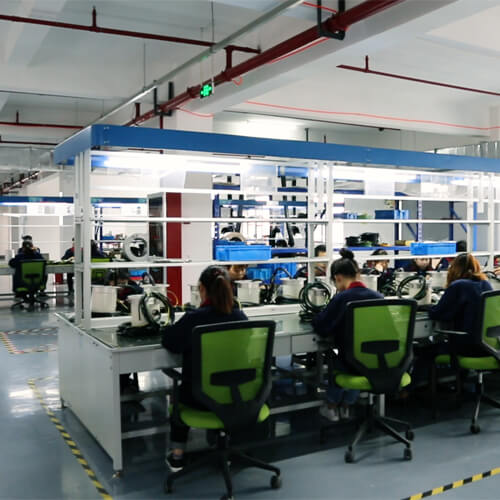
One of the defining characteristics of slip rings for wind turbines lies in their construction. Equipped with elastic lap joints, rolling laps, sealings, and innovative movement structures, they form a durable and reliable rotary connection system. Notably, the inclusion of precision parts and suitable materials further enhances their design, making them more suitable for wind turbine applications.
Moreover, slip rings are extremely critical due to the nuances associated with wattage transfer capacity and power loss. Wind turbine applications often require custom-designed slip rings to ensure the proper capacity and flawless function. Thus, despite being relatively small in size, slip rings have a considerable impact on the functioning of a wind turbine. Overall, the popularity of slip rings in wind turbines can be attributed to their specific design and the irreplaceable role they play in the efficient functioning of a wind turbine.
Structure of Wind Turbine Slip Ring
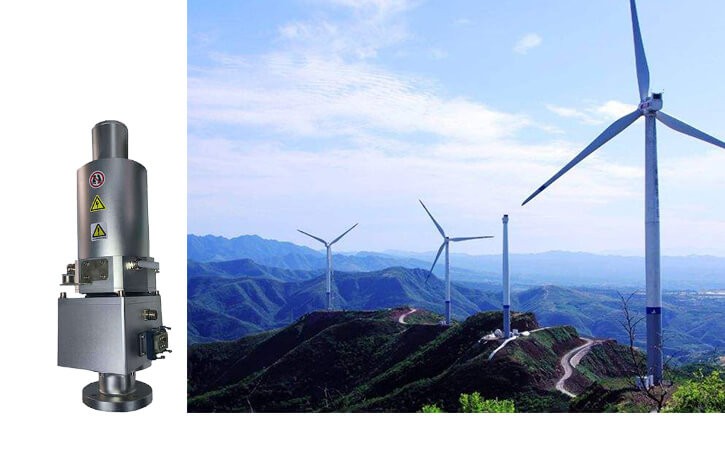
A wind turbine slip ring is an electro-mechanical device designed for the transfer of current between a stationary and rotating component within the wind turbine. The slip ring structure is rather simple yet ingenious, consisting primarily of two main parts: the ring and the brush. Here is a more in-depth look at its structure:
- Rings:
Rings, also referred to as rotor rings, are the circular conducting parts of a slip ring that rotates with the mechanical structure. They are primarily made up of materials like copper or other conductive alloys, ensuring efficient transmission of power or signals.
In the context of a wind turbine, rotor rings are attached to the rotating part of the wind turbine — typically the nacelle, which moves in response to changes in wind direction. If there are multiple electrical circuits, the slip ring can contain multiple concentric rings, each insulated from one another.
- Brushes:
Brushes are the stationary counterpart in the slip ring setup, typically made from metal-graphite or precious metals, depending on the application. They are designed to maintain ongoing contact with the rotating rings without hindering their movement. As the ring rotates, the brush slides over its surface, facilitating the transfer of electrical signals or power.
For the wind turbine, the brushes are positioned and remain stationary within the stator part of the turbine. As the rotor rings rotate, the brushes maintain constant contact with the rings to ensure signal and power transmission with low friction and wear.
- Housing:
The structure is typically enclosed in a housing to protect it against external elements and contamination. The housing is often made from materials like aluminum or stainless steel, chosen for their durability and ability to resist harsh weather conditions common to wind turbine environments.
This split structure of a slip ring ensures continuous operation of the wind turbine, even under conditions of prolonged rotations, thereby facilitating efficient energy conversion and minimizing wear and tear.

Advantages of Wind Turbine Slip Ring

1. Unlimited Rotation:
Wind turbine slip rings allow for unlimited 360-degree rotation of wind turbines. This rotational freedom is critical because wind turbines need to consistently align with the wind’s direction to optimize power generation.
2. Efficient Power and Data Transmission:
Slip rings ensure a consistent transfer of power and electrical signals from the stationary to the rotating part of the turbine (and vice versa), thereby facilitating efficient power and data transmission even during continuous rotation.
3. Minimized Wear and Tear:
The slip ring’s design, using brushes and rings that minimize contact friction, helps in reducing the wear and tear of the components, extending the overall lifespan of the unit.
4. Maintenance and Cost Efficiency:
As they are designed for long-term operation with minimum maintenance requirements, wind turbine slip rings help minimize operation costs. In addition, the convenience of replacing individual components of a slip ring instead of the entire unit proves cost-effective.
5. Durability:
Slip rings for wind turbines are designed to be rugged and durable, capable of withstanding harsh weather conditions and extreme temperatures, which are typical in wind turbine environments.
6. Customizable:
Wind turbine slip rings can be tailored according to the specific requirements of a turbine’s design, securing compatibility, and smooth operation.
These advantages make the wind turbine slip ring an indispensable component in the realm of wind energy generation. The slip rings ensure uninterrupted operation and longevity of wind turbines, thereby supporting sustainable and efficient energy production.
Types of Slip Rings Used in Wind Turbines
Slip rings used in wind turbines are specialized to handle the unique requirements of the application, such as high power transmission, reliability, and environmental resilience. Here are the common types of slip rings used in wind turbines:
1. Electrical Slip Rings
- Standard Electrical Slip Rings: These are used for transmitting electrical power and signals from the stationary part to the rotating part of the wind turbine.
- High Current Slip Rings: Designed to handle high current loads, essential for large wind turbines with significant power requirements.
- Low Noise Slip Rings: Engineered to minimize electrical noise, crucial for sensitive signal transmissions.
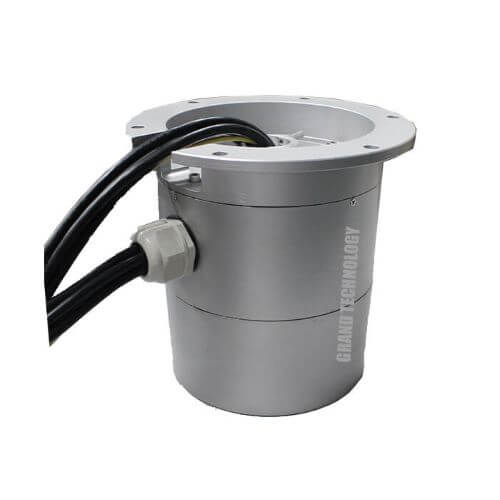
2. Fiber Optic Slip Rings
- FO Slip Rings (FORJ – Fiber Optic Rotary Joints): Used for high-speed data transmission with minimal signal loss and electromagnetic interference, suitable for modern wind turbines with advanced monitoring systems.
3. Hydraulic Slip Rings
- Hydraulic Rotary Unions: Combine the transmission of hydraulic fluid and electrical power/signals. These are often used in wind turbines that utilize hydraulic systems for pitch control.
4. Pneumatic Slip Rings
- Pneumatic Rotary Unions: Facilitate the transmission of compressed air and electrical signals, useful in turbines that use pneumatic systems for control functions.
5. Hybrid Slip Rings
- Combination Slip Rings: These integrate electrical, fiber optic, and fluid (hydraulic or pneumatic) transmission capabilities into a single unit, offering versatile solutions for complex wind turbine systems.
6. Modular Slip Rings
- Customizable Units: Designed to be modular and customizable, allowing for easy upgrades and maintenance. These are particularly useful for turbines that require tailored solutions for specific applications.
7. Compact Slip Rings
- Space-Efficient Designs: Compact slip rings are used in applications where space is limited, providing efficient performance without occupying much room.
8. High-Temperature Slip Rings
- Temperature-Resistant Models: Designed to operate in extreme temperature conditions, ensuring reliability in harsh climates where wind turbines are often deployed.
9. Long-Life Slip Rings
- Durable Designs: Engineered for long operational life with minimal maintenance, essential for reducing downtime and maintenance costs in wind turbines.
By choosing the appropriate type of slip ring for specific wind turbine applications, manufacturers and operators can ensure optimal performance, reliability, and longevity of their wind energy systems. The wind turbine slip ring selection process involves evaluating factors such as the turbine’s size, operating environment, current and voltage requirements, and expected lifespan. Selecting a high-quality slip ring that is designed for harsh environmental conditions, including exposure to moisture, dust, and extreme temperatures, can significantly reduce the need for frequent maintenance and extend the service life of the turbine. With the right slip ring, operators can reduce downtime, lower maintenance costs, and maximize the overall efficiency of their wind energy systems.
Power Slip Rings for Wind Turbines
Power slip rings are crucial components in wind turbines, enabling the transmission of electrical power and signals from the rotating hub to the stationary nacelle. Here’s an overview of their key features and benefits:
Key Features
- High Current Capacity: Designed to handle the high currents generated by wind turbines, ensuring efficient power transfer.
- Durability: Made with robust materials to withstand harsh environmental conditions, such as extreme temperatures, moisture, and vibration.
- Low Maintenance: Engineered for long service life with minimal maintenance requirements, reducing downtime and maintenance costs.
- Compact Design: Optimized for space constraints within the nacelle, allowing for easy integration into the turbine system.
- Signal Transmission: Capable of transmitting both power and data signals, enabling real-time monitoring and control of turbine functions.
Benefits
- Efficiency: Ensures smooth and efficient power transfer, maximizing energy output.
- Reliability: High-quality construction and materials ensure reliable performance even in demanding conditions.
- Cost Savings: Low maintenance and long lifespan contribute to overall cost savings in turbine operation and maintenance.
- Scalability: Available in various sizes and configurations to meet the needs of different turbine models and power ratings.
Applications
- Onshore Wind Turbines: Ideal for land-based wind farms where environmental conditions vary widely.
- Offshore Wind Turbines: Designed to withstand the challenging conditions of offshore environments, including saltwater exposure and high humidity.
Customization
- Tailored Solutions: Can be customized to meet specific requirements, such as different power ratings, signal types, and environmental conditions.
- Integration with Monitoring Systems: Can be integrated with advanced monitoring systems for predictive maintenance and performance optimization.
Considerations for Selection
- Power Rating: Ensure the slip ring matches the turbine’s power output requirements.
- Environmental Resistance: Choose a slip ring that can withstand the specific environmental conditions of the installation site.
- Compatibility: Verify compatibility with existing turbine components and systems.
Common Issues and Troubleshooting of Wind Turbine Slip Rings
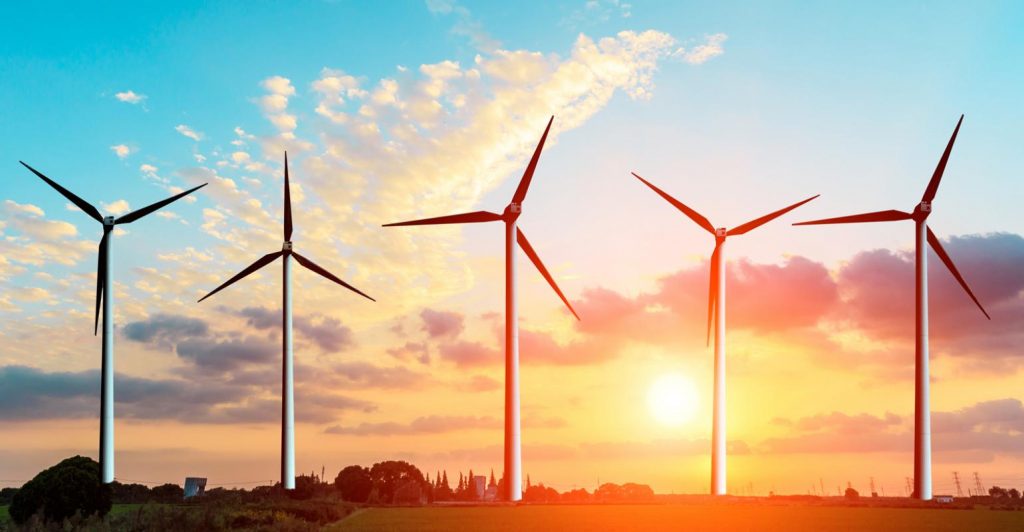
As an integral part of wind turbines, slip rings, like other mechanical parts, can experience several issues. Understanding these problems and providing appropriate solutions can improve the life span and performance of your slip ring system. Here are eight common issues related to wind turbine slip rings and how to troubleshoot them effectively.
- Wear and Tear
The continuous rotational motion might cause gradual wear on both the conductive contacts and insulating separators, reducing the overall efficiency and sometimes causing complete failure of the slip ring function.
Troubleshooting: To mitigate wear and tear, regular maintenance should include visual and electrical inspection to identify the degree of erosion on the brushes and the rings. Besides, performance data can also be monitored for any unusual changes that suggest wearing. In severe cases, replacing the brushes or resurfacing the rings may be required to prevent further damage and maintain operational effectiveness.
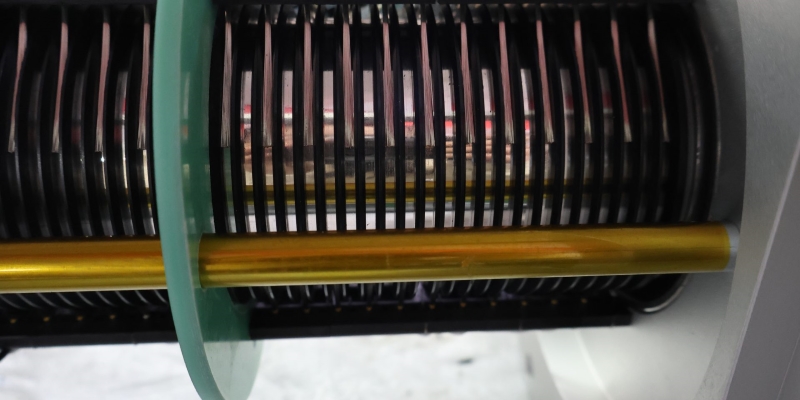
- Poor Contact
Poor or inconsistent contact between the brushes and the rings may result in erratic signals or power fluctuations, potentially affecting the performance of the wind turbine system.
Troubleshooting: The adjustment of spring pressure for the brushes can help improve the connection, as high or low spring pressure can affect signal transmission and brush wear.
Furthermore, cleaning the brush and ring surfaces can remove any dust or contamination that hinders perfect contact.
- Dirt and Debris Accumulation
The accumulation of dust, oil, or other forms of debris on the rings can cause insulation problems, uneven brush wear, or even influence the quality of transferred signals and power.
Troubleshooting: Scheduled cleaning intervals should be established to minimize the buildup of contaminants. The use of appropriate cleaning methods and substances is important to ensure no residues are left after cleaning. A sealed slip ring design may also be considered to protect the system from external contaminants.
- Oxidation and Corrosion
Being subjected to extreme weather conditions can lead to oxidation and corrosion of the slip ring components, degrading their electrical conductivity and lifespan.
Troubleshooting: The use of rings and brushes made from corrosion-resistant materials or surface treatments offers an efficient preventive measure. Regular inspections can aid in identifying any signs of corrosion, which should be dealt with immediately through a suitable method such as cleaning, polishing, or even part replacement.
- Overheating
Overheating not only accelerates wear but also poses a risk of mechanical failure.
Troubleshooting: Regular monitoring of temperature changes can help in detection early on. If overheating is consistent, it may indicate a larger issue with the turbine’s cooling system. In such a case, repairing the cooling system or installing an additional cooling unit might be necessary.
- Electrical Noise
Electrical noise can degrade the quality of data signal transmission, impacting the efficient functioning of the wind turbine.
Troubleshooting: Causes of such noise include misalignment or uneven wearing of the brushes and rings. Inspecting the brushes and rings for proper alignment, and performing corrective maintenance procedures, can help in eliminating noise.
- Broken Wires or Connectors
Aging, vibration, and physical stress can cause connectors or lead wires to break or disconnect, impacting the power or data transmission.
Troubleshooting: Regular physical inspections could help identify and replace any broken wires or connectors. It also helps to ensure strain relief on cabling and securing connectors to prevent future issues.
- Excessive Vibration
Excessive vibrations not only lead to faster wear and tear but can also cause misalignment of the brushes and rings, consequently affecting the quality of transmission.
Troubleshooting: A vibration analysis could help identify the source or cause of the vibrations. Solutions may then involve structural adjustments to the wind turbine, replacing faulty components, or even balancing the turbine.
Overall, preventative maintenance and frequent inspections are fundamental in identifying and rectifying issues early on, ensuring optimal performance, and maximizing the lifespan of wind turbine slip rings.
Ready to enhance your wind turbine efficiency? Inquire about our high-quality slip rings here.
Maintenance of Wind Turbine Slip Rings
Maintenance is essential in ensuring the longevity and optimum operation of wind turbine slip rings. Regular check-ups can prevent breakdowns, reduce downtime, and thus increase the efficiency of wind turbines. Here’s a comprehensive look at the major components involved in maintaining the slip rings.
- Regular Inspections
Regularly scheduled inspections serve as the initial step in slip ring maintenance. They can involve visual checks, mechanical tests, and electrical quality assessments. Measurements for faults or wear and tear can provide critical information about the condition of components and the frequency of required maintenance.
- Cleaning
Cleaning is vital as it affects both the performance and life of the wind turbine. It involves eliminating dirt, debris, and other forms of contamination from the brush and ring surfaces. Cleaning increases operational efficiency by reducing wear and enhancing electrical contact quality. High-pressure air or a soft brush can be used depending on the level of contamination.
- Adjusting Brush Pressure
The pressure of the brush on the slip ring is an important aspect affecting signal quality and brush wear. Uneven or inadequate pressure can result in poor electrical contact and uneven brush wear. Therefore, it’s essential to monitor and adjust the spring pressure to ensure optimal performance and increase the lifespan of the components.
- Replacement of Worn-out Components
Despite regular cleaning and adjustments, components like brushes and springs may wear over time. Identifying this wear during regular inspections and replacing the component can prevent further damage and potential failures. In addition to brushes and springs, worn-out bearings or corroded wires should be replaced to avoid systemic issues.
- Handling of Electrical Noise
Assessment of electrical noise is essential in maintaining a slip ring. The noise can be an indicator of uneven wearing of the brushes and rings that could degrade the quality of data signal transmission. Checking alignment, replacing worn-out components, and implementing maintenance measures can help in reducing this noise.
- Vibration Analysis
Excessive vibration can cause premature wear and damage to the slip ring and associated components. Vibration analysis helps detect these issues, allowing for preemptive actions such as rebalancing, securing, or part replacement.
- Proper Care during Extreme Weather Conditions
The wind turbine slip ring, being exposed to external conditions, faces the risk of corrosion and oxidation. Regular checks should be made and appropriate anti-corrosive coatings should be applied when needed. Sealed designs may also be used to protect the slip ring from harsh weather conditions.
- Cooling System Maintenance
Overheating of the slip ring might negatively impact its efficiency and longevity. The cooling system of the wind turbine thus needs to be checked frequently for its operations. Any fault or inefficiency should be repaired promptly to maintain the desired temperature.
In conclusion, regular maintenance and timely repairs are invaluable in preventing slip ring issues, maximizing its lifespan, and ensuring the overall performance of the wind turbine. By adopting a schedule of routine checks and preventative care, operators can ensure that their wind turbines and the slip rings within them consistently perform at an optimal level.
Replacement Solutions for Wind Turbine Slip Ring
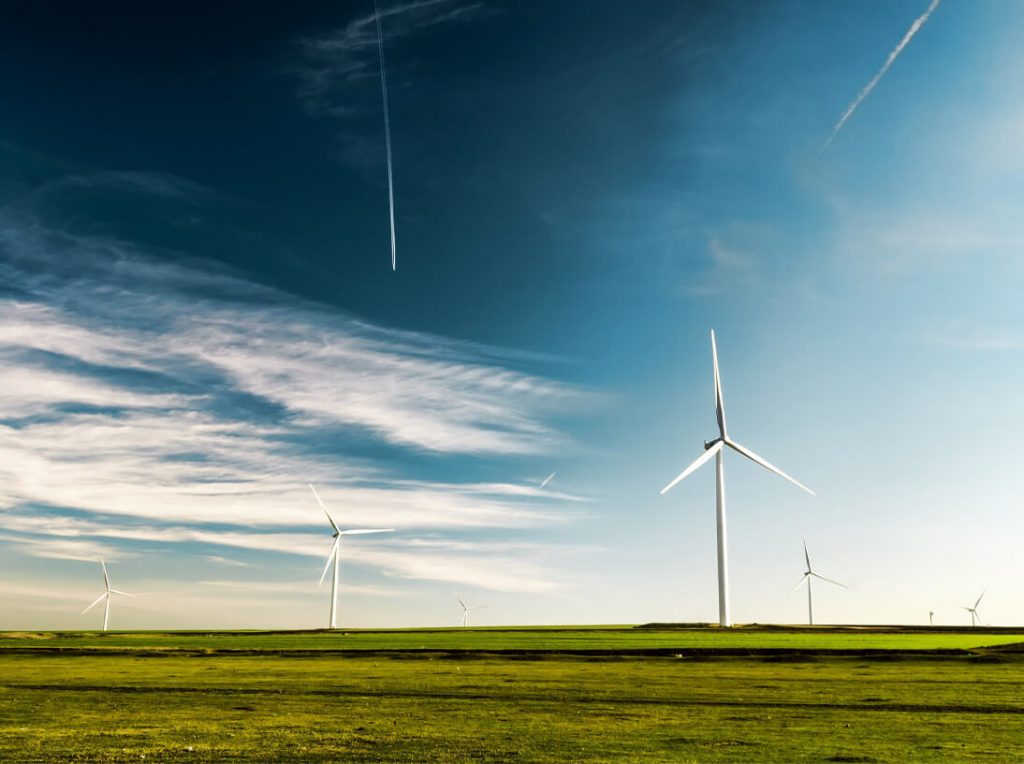
When troubleshooting and maintenance methods fall short in dealing with wind turbine slip ring issues, replacement often is the only viable solution. This process can mitigate future downtime, enhance operational efficiency, and prolong the lifespan of the wind turbine. Here’s an overview of the best practices for wind turbine slip ring replacement solutions.
- Identifying the Need for Replacement
Early detection is critical in addressing slip ring issues timely. Regular inspections should be conducted to check for extreme wear and tear, structural deformities, rusting, or frequent operational disruptions that might indicate a need for replacement.
- Choosing the Right Replacement Part
When replacing a slip ring, ensure that the replacement piece matches the precise specifications and design requirements of the existing ring. This includes factors such as ring conductivity, current rating, rpm, and service life. Using the wrong part can lead to operational inefficiencies and potential equipment damage.
- Installation and Alignment
Proper installation and alignment of the new slip ring are crucial to prevent future problems. This process involves securing the slip ring in its mounting area, aligning it correctly, and connecting the wiring. If not done correctly, this can lead to reduced performance and even premature failure of the slip ring.
- Testing after Replacement
Once the replacement has been made, necessary tests should be conducted to verify that the new slip ring is performing as expected. This includes both operational tests to check functionalities and electrical tests to ensure proper conduction and signal transmission.
- Regular Maintenance of the Replacement Part
Just like the original component, the slip ring replacement must also undergo regular maintenance, including cleaning and pressure adjustments of brushes, corrosion checks, and more, to preserve its functionality and extend its operational life.
- Opting for Advanced Technologies
When faced with frequent replacements, considering a shift from traditional designs to advanced slip ring technologies might prove beneficial. For instance, fiber optic rotary joints (FORJs) offer higher data transmission rates, reduced noise, and resistance to environmental factors thus resulting in less frequent replacements.
- Consulting with Professionals
Engaging with professionals during the replacement process is often advantageous, especially if the wind turbine incorporates complex or advanced design. Professionals can provide expert advice, installation assistance, and post-installation support.
In conclusion, replacing a wind turbine slip ring doesn’t merely involve swapping out old parts for new ones; it requires careful selection, fitting, testing, and maintenance of the replacement part. By following these guidelines, operators can ensure a successful replacement, prolonging the operational efficiency and overall longevity of their wind turbines.
Wind Turbine Slip Ring Anti-Icing / De-Icing Solutions
Installation of Slip Ring in Wind Turbine
The proper installation of a slip ring in a wind turbine is crucial to the functionality and efficiency of the system, as it ensures seamless data transmission, smooth rotation, and reduced wear and tear, leading to longer service life. Below, we outline a step-by-step guide to installing a slip ring in a wind turbine.
Step 1: Preparation
Before beginning the installation, it is crucial to prepare yourself and the work area:
- Ensure that the work environment is clean, organized, and free of debris.
- Gather all the required tools, including wrenches, screwdrivers, pliers, voltmeter, and any other relevant equipment.
- Turn off the power source or main turbine switch for safety purposes.
- Familiarize yourself with the installation instructions provided by the slip ring manufacturer.
Step 2: Slip Ring Selection
Choose the appropriate slip ring for the specific turbine model to ensure compatibility and efficient performance. Take note of factors such as the operating temperature range, current and voltage requirements, signal types, and rotational speed.
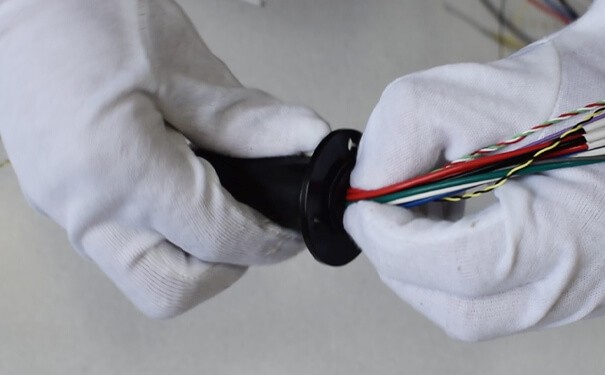
Step 3: Mounting and Fixing the Slip Ring
Standard slip rings for wind turbines feature mounting flanges or brackets for secure attachment to the turbine structure. Follow the manufacturer’s instructions to position and fix the slip ring.
- Align the slip ring in the designated mounting location (usually the nacelle).
- Secure the slip ring in place, using the mounting hardware provided (screws, nuts, and bolts). Ensure all fastenings are tight and the slip ring is stably positioned.
Step 4: Connecting Cables and Wires
Carefully connect the electrical wires and cables to the slip ring’s terminals. These wires include connections for power and signal transmission (such as data lines and fiber optics).
- Ensure that all wires are properly routed, avoiding sharp bends or twists which could cause damage or reduce reliability.
- Keep electrical connections organized and well-labeled for easy troubleshooting in the future.
- Make sure that the wires do not come in contact with other moving parts in the turbine.
Step 5: Aligning Brushes and Rings
The proper alignment of brushes and rings significantly impacts the performance and life of the slip ring. Follow these steps to achieve optimal alignment:
- Verify that the brushes are correctly positioned to maintain continuous contact with the rings.
- Adjust the spring pressure for the brushes, according to the manufacturer’s instructions and recommendations. This will ensure sufficient contact force between the brushes and rings without causing excessive wear.
Step 6: Test the Installation
Before powering the wind turbine, conduct necessary testing to verify that the slip ring installation is successful and performs efficiently.
- Visually inspect all mounting points, connections, and alignments.
- Perform electrical tests, such as continuity and resistance measurements, to ensure proper connections.
- Conduct a trial run of the turbine’s rotation, observing any abnormal vibration or noise caused by the slip ring installation.
Step 7: Finalize the Installation
With the successful testing of the slip ring, complete the installation by:
- Tidying up any loose cables or excess wiring.
- Reassembling any removed protective covers or enclosures.
- Turning the power source or main turbines switch back on.
By following these steps, you will ensure efficient and reliable installation of the slip ring in your wind turbine. Don’t forget to adhere to regular maintenance schedules, as it is essential to ensure longevity and maintain the performance of the slip ring system.
Customized Solutions for Wind Turbine Slip Ring
In some cases, wind turbine slip rings require unique or customized solutions to accommodate specific requirements, design constraints, or environmental factors. Customized slip rings can significantly improve the efficiency, durability, and adaptability of the wind turbine system. The following provides insights into the designing, manufacturing, and integration of customized slip rings for wind turbines.
Identifying Customization Requirements
The first step in developing a customized wind turbine slip ring is identifying the precise requirements, such as:
- Specialized electrical performance, including higher voltage or current ratings.
- Specific data transmission needs, incorporating additional signal lines or fiber optic channels.
- Environmental challenges, such as extreme temperatures, high humidity, or corrosive environments.
- Space constraints or specific structural aspects of the turbine design.
Collaborating with Manufacturer
Once the requirements are defined, collaborate with a reputable slip ring manufacturer experienced in custom solutions. The manufacturer will consider the requirements and design a tailored solution that meets the turbine’s specific needs and constraints.
Custom Design Development
The custom design process typically involves several stages, including:
- Concept Development: The manufacturer engineers will create conceptual designs aligned with the established requirements, environmental conditions, and any additional constraints.
- Detailed Engineering: Alignment of the design with specific technical design specifications, standards, and testing protocols. This process may involve optimizing the slip ring’s mechanical and electrical performance, material selection, and manufacturing techniques.
- Prototyping: Manufacturing the initial prototype of the custom slip ring to validate its functionality and performance, ensuring it meets the design requirements.
- Testing and Refinement: Rigorous testing of the prototype for mechanical and electrical performance, durability, and reliability. The design may undergo further iterations and refinements based on these test results.
- Final Approval: Once the custom slip ring design meets all requirements and passes tests, it can be approved for manufacturing.
Integration with Wind Turbine
The custom slip ring must be integrated seamlessly with the existing wind turbine system. This involves:
- Ensuring that the mounting mechanism is compatible with the turbine’s design, facilitating secure attachment and alignment.
- Adequate space allocation for the slip ring, avoiding any interference with other components or moving parts.
- Proper routing of electrical cables, taking into consideration the custom slip ring’s unique connection points.
Post-Installation Support
After successfully integrating the custom slip ring into the wind turbine, post-installation support is crucial, including:
- Maintaining open communication with the manufacturer to address any queries or concerns.
- Monitoring the slip ring’s performance within the turbine to identify any issues early on.
- Staying up-to-date on maintenance recommendations from the manufacturer to ensure the longevity of the custom slip ring.
In conclusion, customizing a wind turbine slip ring requires thorough attention to detail and close collaboration with the manufacturer. By carefully identifying the specific requirements and working through the design, prototyping, and testing stages, a tailored slip ring solution can be developed that significantly enhances the wind turbine’s performance and efficiency.
Wind Turbine Slip Ring Manufacturers
Several global companies specialize in producing suitable slip rings for wind turbines. It is advisable to choose manufacturers with excellent track records.
| No. | Manufacturer | Website |
| 1 | Moog | https://www.moog.com/ |
| 2 | Schleifring | https://www.schleifring.de/ |
| 3 | Cobham | https://www.cobham.com/ |
| 4 | Stemmann-Technik | https://www.stemmann.com/en/home |
| 5 | Mersen | https://www.mersen.com/ |
| 6 | GAT | https://www.gat-mbh.de/ |
| 7 | Morgan | https://www.morganelectricalmaterials.com/en-gb/ |
| 8 | Cavotec SA | https://www.cavotec.com/ |
| 9 | LTN | https://www.ltn-servotechnik.com/ |
| 10 | Hangzhou Grand Technology | https://www.grandslipring.com/ |
If you want to know about other well-known slip ring manufacturers in the world, you can read Top 10 Slip Ring Industry Key Manufacturers 2023, Top 10 Slip Ring Manufacturers In the USA Market 2023, and Top 10 Slip Ring Manufacturers in China.
Conclusion
The wind turbine slip ring stands as an imperative aspect of wind energy generation. It blends durability, efficiency, and optimal rotation to stimulate productivity. However, aspects such as correct installation, preventive maintenance, and troubleshooting are vital to maximizing its operational life and thus, the overall performance of wind turbines.
Interested in bulk orders of Wind Turbine Slip Rings? Get in touch to discuss your needs.
The crucial nature of wind turbine slip rings signifies the need to source them from reputable manufacturers and adhere to guidelines for installation and maintenance. Remember, your wind turbine’s productivity is significantly influenced by the efficiency of the wind turbine slip ring.
FAQs About Wind Turbine Slip Ring
Q 1: What are the common signs that a wind turbine slip ring requires replacement?
A1: Some common signs that a wind turbine slip ring needs replacement include:
- Excessive wear and tear or visible damage to the rings or brushes.
- Frequent operational disruptions or signal transmission failures.
- Structural deformities, such as warping or deformation, affect alignment.
- Corrosion or rusting on the slip ring components can hinder electrical conduction.
Any of these indicators suggest that the slip ring has reached the end of its service life or has experienced a failure that warrants immediate attention and potentially a replacement.
Q 2: How can I ensure the proper installation of a new slip ring in a wind turbine?
A 2: To ensure the proper installation of a new slip ring in a wind turbine system, follow these guidelines:
- Select the appropriate slip ring model that matches the existing turbine’s specifications.
- Follow manufacturer-provided instructions for mounting, aligning, and securing the slip ring.
- Thoroughly test the new slip ring after the installation to ensure it performs as intended and meets operational requirements.
These steps, along with regular maintenance, will help ensure optimal performance and extended service life for the replaced slip ring.
Q 3: Can I improve the performance of my wind turbine slip ring with a customized design?
A 3: Yes, customized slip rings can significantly improve the performance, durability, and adaptability of your wind turbine system. Custom-designed slip rings accommodate specific requirements, design constraints, and environmental factors, leading to enhanced efficiency and tailored solutions that suit your turbine’s unique needs.
Q 4: How can I maintain my wind turbine slip ring to prolong its service life?
A 4: Regular maintenance of a wind turbine slip ring involves the following practices:
- Cleaning the slip rings and brushes to remove contaminants or debris that can cause increased wear.
- Pressure adjustments of brushes for adequate contact force without causing excessive wear and tear.
- Periodic inspections to detect any structural deformities, corrosion, or alignment issues early on.
Conducting regular maintenance can help maintain the performance of the slip ring and extend its lifespan.
Q 5: How do advanced slip ring technologies, such as Fiber Optic Rotary Joints (FORJs), improve wind turbine performance?
A 5: Advanced slip ring technologies like Fiber Optic Rotary Joints (FORJs) offer several benefits over traditional slip rings:
- Higher data transmission rates, providing faster and more reliable communication between the turbine and control systems.
- Reduced electrical noise and interference, ensuring cleaner signal transmission for critical controls and sensor inputs.
- Greater resistance to extreme environmental factors (e.g., temperature, humidity), resulting in improved reliability and longer service life.
Incorporating advanced technologies like FORJs can lead to more efficient, reliable, and durable wind turbine systems.
See What We Can Do

